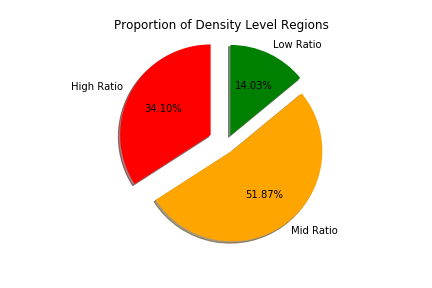T-Test (Independent Design)
Objective:
The correlation between food environment and health outcomes is tested in three different parts. We first use the t-test to identify any statistical signficiant difference of health outcomes in the high and average fast food counties. In the t-test setting, high fast food ratio is the treatment in our study and we are comparing the health outcomes in these counties that received treatment and compares it to all the counties in our data. For the hypothesis testing, counties in data are divided into three catagories.
- High Ratio Counties: Population per Fast Food Restaurant Ratio less than 500
- Mid Ratio Counties: Population per Fast Food Restaurant Ratio less than 1500 and greater than 500
- Low Ratio Counties: Population per Fast Food Restaurant Ratio less than 2000 and greater than 1500

Test for Obesity Rate:
Null Hypothesis: Obesity rates in all counties are statistically higher than or equal to the high fast food restaurant ratio counties.
Alternative Hypothesis: Obesity rates in all counties are statistically lower than the high fast food restaurant ratio counties.
Alpha = 5%, one-tailed test
Test for Diabetes Rate:
Null Hypothesis: Diabetes rate in all counties are statistically higher than or equal to the high fast food restaurant ratio counties.
Alternative Hypothesis: Diabetes rate in aall counties are statistically lower than the high fast food restaurant ratio counties.
Alpha = 5%, one-tailed test
| Test On | t-statistic | p-value |
|---|---|---|
| Obesity Rate | 1.3597 | 0.1740 |
| Diabetes Rate | -1.059 | 0.2897 |
Conclusion:
We do not find any statistical evidence that suggests higher obesity rate or diabetes rate is found in the high fast food ratio counties at 5% signficant level. Therefore, we can conclude that the treatment (high fast food ratio) does not cause higher obestity rate or diabetes rate within the county.